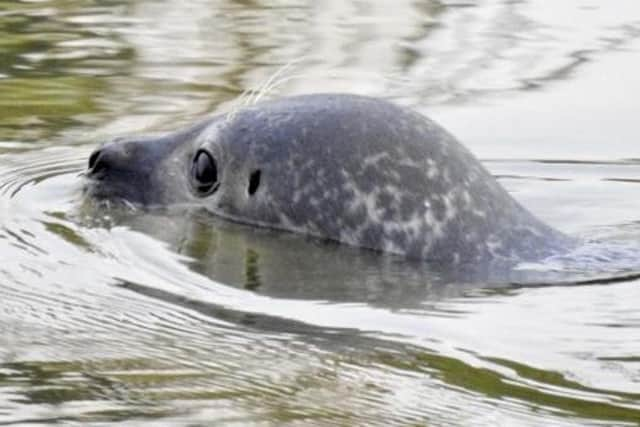Sussex seal sightings: Annual report reveals exciting year for seal sightings in Sussex
and live on Freeview channel 276
Zoologist Stephen Savage, regional co-ordinator for the Sea Watch Foundation, is based at Shoreham Beach, where the young female seal Riviere has been delighting visitors since May 2020.
Having completed his annual report for 2021, Stephen noted the support of Sussex World newspapers and a number of Facebook community groups had helped his research enormously.
Advertisement
Hide AdAdvertisement
Hide AdStephen said: “We have had a big increase in detailed reported sightings this year to 217 where it has been possible to verify the species, both harbour and grey seal seen locally, and also identify individual seals.”


Stephen has continued to monitor the movements of Riviere, which came to the River Adur from Belgium, and a few other known seals using photographic identification profiles he created.
Stephen said: “More than 100 sightings of Riviere were recorded in 2021, which have supported my hypothesis that resident seals usually haul out in the upper tidal regions and swim down river with the outgoing tide to feed in the estuary and sea, using the tidal flow to save energy.”
The downside of hauling out on the riverbank is that this is usually close to footpaths and public rights of way. This means people often unintentionally disturb resting seals, which Stephen said can be measured by the degree of changes in a seal’s behaviour.


Advertisement
Hide AdAdvertisement
Hide AdStephen said: “People often think that disturbing a seal means causing it to return to the water but seals can suffer continued low levels of disturbance, which over time can also be a big problem.
“I frequently receive reports from people who have said the seal was ‘pleased to see them’ or ‘showing off’ when actually what they were observing was an increase in vigilance and disturbance behaviour.
“However, when a seal is in the water away from its haul out site, it can be very curious. It’s like the seals are giving mixed messages, which can be confusing to an observer, as the behaviours are often specific to whether they are swimming or hauled out.”
To help raise awareness about our local seals and seal behaviour, Stephen presented several talks last year.
Advertisement
Hide AdAdvertisement
Hide AdOne of the aims of Stephen’s work has been to discover where the seals come from before they arrive in Sussex.
Stephen explained: “It has been evident for some time that the seals we see are wandering juveniles. Young seals leave the beach where they were born and return when they are old enough to mate.
“I have kept in contact with the Belgium team who tagged Riviere and they feel that she may stay here another year, possibly two, before returning to Belgium.”
Stephen has been able to track the origins of other visiting seals, indicating that some come from France, Netherlands and the east coast of Britain.
Advertisement
Hide AdAdvertisement
Hide Ad“If we have a few tagged seals from these locations, its likely that others also visit Sussex from the same locations,” he explained.
His sea mammal report also includes sightings of dolphins, porpoise and whales, known collectively as cetacean. Bottlenose dolphin where the species most frequently seen and sightings off the coast of Shoreham included bottlenose dolphins, a pod of common dolphins and two killer whales, known as orca.
Stephen said: “Killer whales off Shoreham is extremely unusual. This is possibly the first verified sighting since 1936, when a killer whale stranded on Hove beach. That skeleton is on display in the Booth Museum of Natural History in Brighton.”
Sightings sent in by the public are a valuable source of data, as you never know where a seal or a dolphin may turn up, and Stephen is keen to hear from anyone who has spotted a seal or other sea mammal in Sussex.
Advertisement
Hide AdAdvertisement
Hide AdHe would like to receive information including where the seal was spotted, the day and time, if the seal was swimming or hauled out and any other information.
Photographs are also useful as they can be used to determine the species and along with video clips, can give a valuable context to the sighting, such as location or behaviours. Close up photographs can be used to create photo ID profiles identifying individual seals, to monitor the movements of individuals seals. You can report your sea mammal sightings by email to [email protected]
